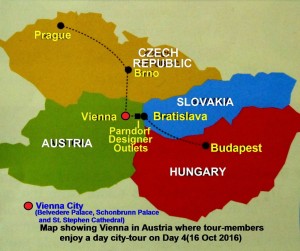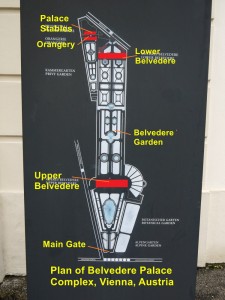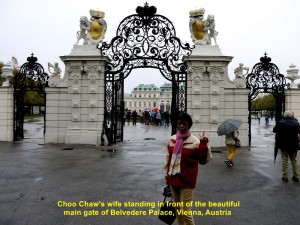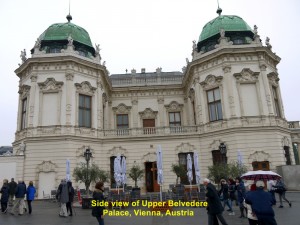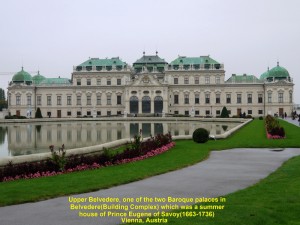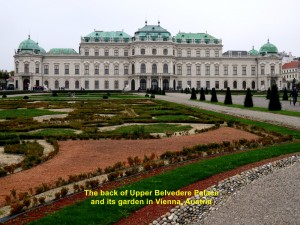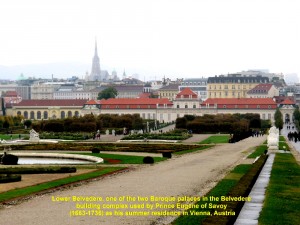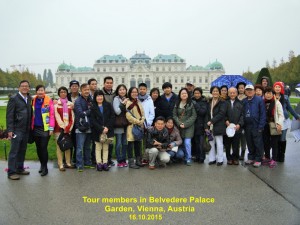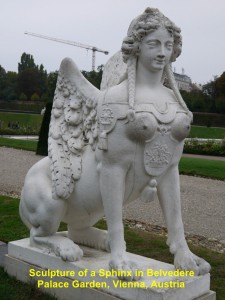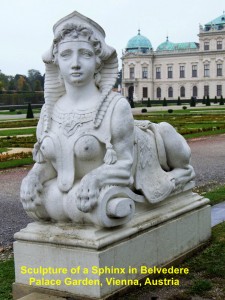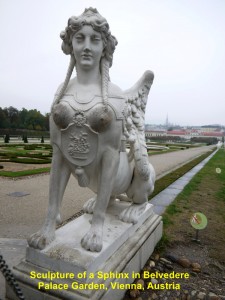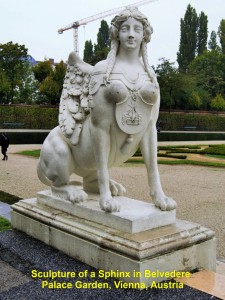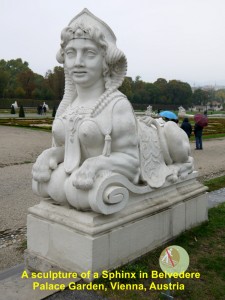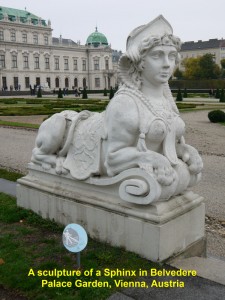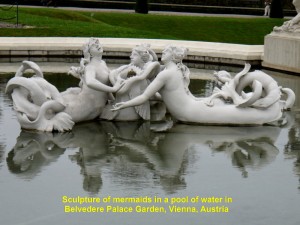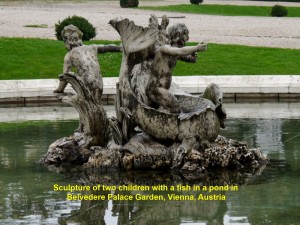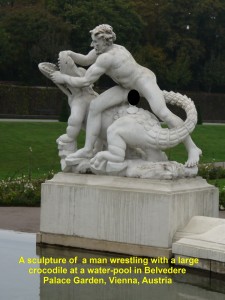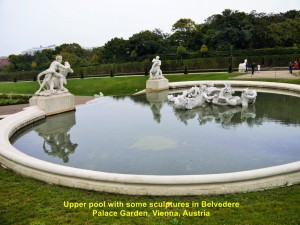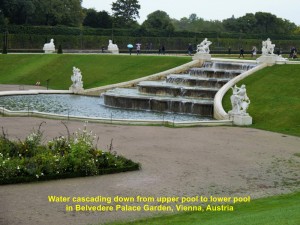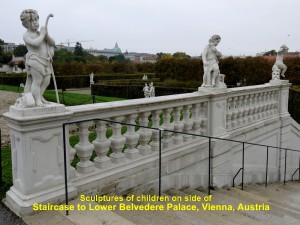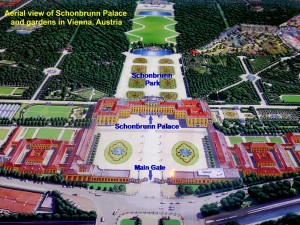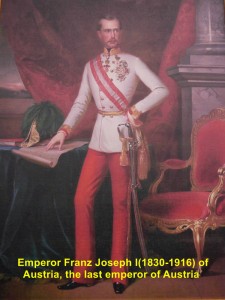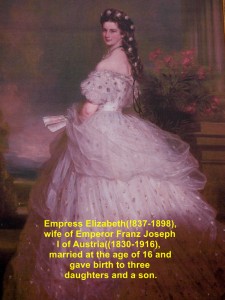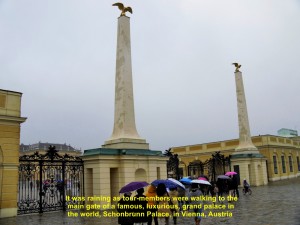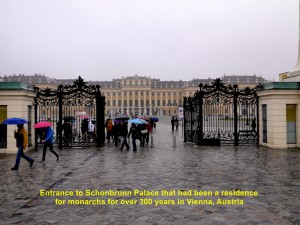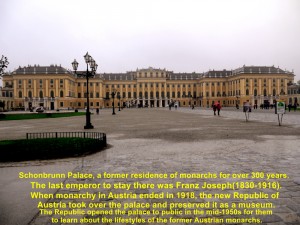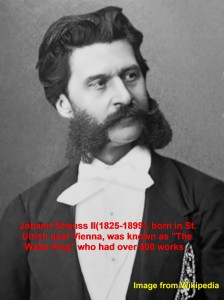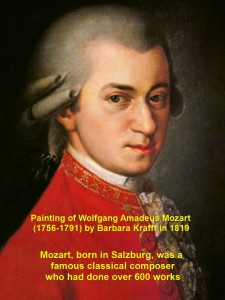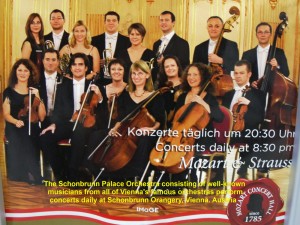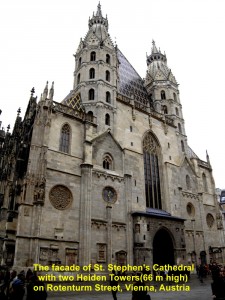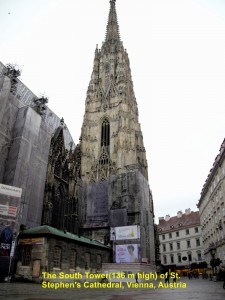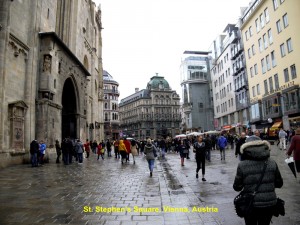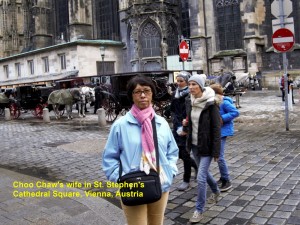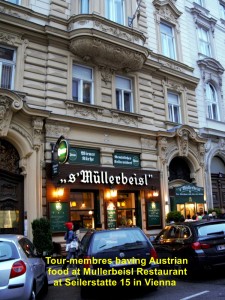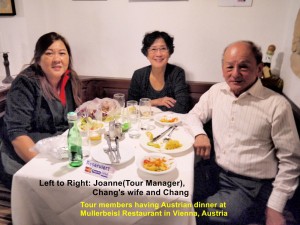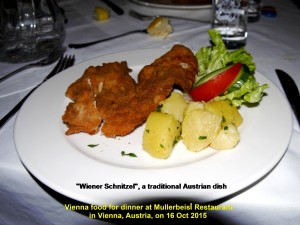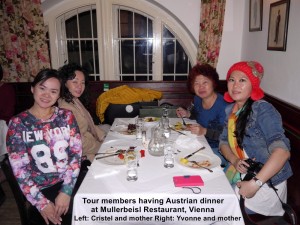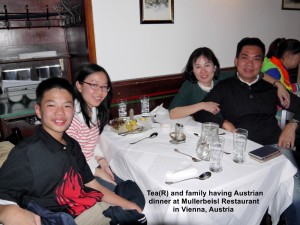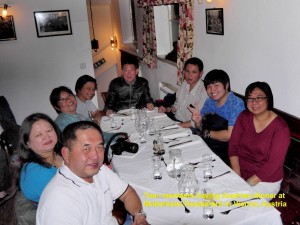Eastern Europe Travel Part IV (Vienna II)
Eastern Europe Travel Part IV (Vienna II)
Day 4 16 October 2015
Belvedere Palace
At 11.25 a.m. we left the oldest palace, Hofburg Palace in Vienna, Austria, and headed for another palace, Belvedere Palace, which is 2.2 km south-east of Hofburg Palace.
Prince Eugene(1663-1732)
Prince Eugene(1663-1732), a very successful military commander in modern European modern history, bought a large piece of land and commissioned people to construct a palace at the present site in 1717. He built the Belvedere complex consisting of two Baroque palaces known as Upper Belvedere and Lower Belvedere, the Orangery and Palace Stables. The prince made it as his summer residence. After his death in 1736, it was handed over to his niece, Victoria.
Empress Maria Theresa(1717-1780)
Later, it was purchased by Empress Maria Therasa(1717-1780), the only female ruler of Habsburg Dynasty. She created a gallery for her ancestors of the Habsburg Dynasty in the Lower Belvedere. Later, she and her son moved the Imperial Art Gallery from Hofburg Palace to the Upper Belvedere. Five years later, the palace became a museum which was opened to public.
Although the Austrian monarchy ended in 1918, Belvedere Palace continues to be an imperial and royal museum.
Arrival at Belvedere Palace
Half an hour after leaving Schonbrunn Palace, we arrived at Belvedere Palace. We were fascinated by Upper Belvedere which was built in Baroque architectural style. Behind it was a large garden, Belvedere Garden, sloping gently downwards towards the second building known as Lower Belvedere.
Sculptures
In Belvedere Garden there are some sculptures like sculptures of female sphinxes and goddesses erected along some main paths, mermaids in a water-pool with sculptures of strong men wrestling with fierce animals around it and a sculpture of children catching a large fish in another water-pool. The water from the pool with the mermaids is cascading into another pool below.
Below are six photos of the sculptures of female Sphinxes which are as big as a human being in the garden:
Other Sculptures
Other sculptures that are found in Belvedere Palace Garden are shown in the photos below:
Schonbrunn Palace
Having spent an hour in the charming and romantic Belvedere Palace Garden, we left for Schonbrunn Palace which is located 7 km west of Belvedere Palace. It was built in Baroque architectural style with 1441 rooms for imperial Habsburg family, state functions and guests. It is the most beautiful palace in Austria.
Emperor Maximilian II(1527-1576)
A Holy Roman Emperor(a Habsburg member), Maximilian II(1527-1576), bought a large piece of River Vienna flood-plain in 1569 and made it as his recreational hunting ground.
Then in 1642, Empress Eleonora Gonzaga(1598-1655), wife of Emperor Ferdinand II(1578-1637) built a summer residence on the land, and she named it “Schonbrunn”(meaning “beautiful spring” as there was an artesian well in the land used by the imperial family).
When Empress Maria Theresa(1717-1780) took over the place she enlarged the palace to accommodate her large family of 16 children(11 daughters and 5 sons).
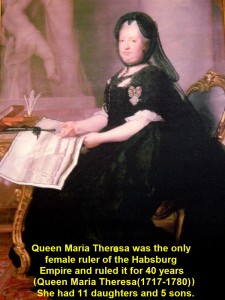
Empress or Queen Maria Theresa(1717-1780), the only female ruler of the Habsburg Empire, Vienna, Austria
The Last Emperor
The last emperor to reside at Schonbrunn Palace was Emperor Franz Joseph I(1830-1916) whose beautiful wife was Elizabeth of Bavaria(Sisi)(1837-1898). He was born at the palace and passed away at the same palace, too.
2 Million People
In 1918 the Austrian monarchy ended and the country became Republic Austria. The Republic took over Schonbrunn Palace and made it a museum for visitors. Since then it has been a popular tourist destination attracting about 2 million people, annually.
Fascination
It was raining, lightly, when we arrived at Schonbrunn Palace. The moment we saw the palace we were fascinated by its beautiful, impressive, grand facade built in Baroque architectural style.
Imperial Palace Tour
Then we toured 22 rooms inside the palace. With the aid of an audio guide, we learned about the rooms.
While touring, we saw the luxurious and cosy rooms of Emperor Franz Joseph I, his children, Empress Maria Theresa and Empress Maria Antoinette(wife of Emperor Louis XVI of France) to name a few. But the state rooms and guest rooms looked more beautiful with large paintings on the walls and ceilings, crystal chandeliers hanging from the ceilings, walls with gold-covered ornaments, priceless furniture and many more. The palace was, undoubtedly, a residence fit for the Austrian monarchs, only.
Unfortunately, we were not allowed to take photographs of the rooms.
Classical Composers
In the 18-19th. Centuries, Vienna attracted many great classical composers due to the patronage of the Habsburgs. Among them were Wolfgang Amadeus Mozart(1759-1791), Johann Strauss II(1825-1899), Joseph Haydn(1732-1809) and Franz Shubert(1797-1828) to name a few.
Schonbrunn Palace Orchestra
Everyday, classical concerts are held at the Schonbrunn Orangery near the main palace. The concerts include the Schonbrunn Palace Orchestra playing classical musics by Mozart and Strauss, two opera singers, a soprano and baritone and two ballet dancers.
St. Stephen’s Cathedral
As our travel agency did not make any arrangement for us to watch the concert, we left the beautiful palace at 3 p.m. for the last place of attraction in Vienna City. It was a Roman church and later a cathedral known as St. Stephen’s Cathedral.
Located 8 km north-east of Schonbrunn Palace, it was a large massive-looking cathedral on Rontenturm Street.
Old and New Buildings
As we were walking along Rontenturm Street, we noticed that the buildings on both sides were built in old and new architectural styles and several storeys high. It was a busy shopping street which attracted countless visitors.
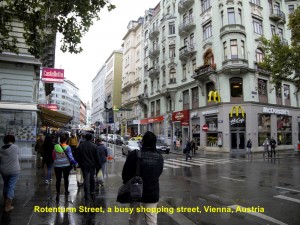
Old and new buildings side by side on both sides of a busy shopping street, Rotenturm Street, in Vienna, Austria
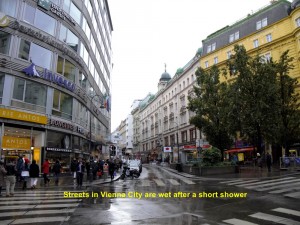
Rotenturm Street is wet after a short shower. St. Stephen’s Cathedral is further down the street in Vienna, Austria
Four Towers
St. Stephen’s Cathedral has four towers. One of them, South Tower, is 136 metres high which is the highest. Its roof is steep and covered with multi-coloured, glazed tiles arranged in diamond-shaped patterns. Built in Romanesque architectural style in 1137-1160 and later in Gothic architectural style, the cathedral hosted many important events in Habsburg Dynasty and Austrian history.
As the cathedral is made of limestone, it turns black, easily, by polluted air and acid rain. Over the centuries, the cathedral was rebuilt when it was burned down, repaired and restored when it was old or damaged by wars.
Two-Horse Drawn Carriages
In the St. Stephen’s Square, there are two-horse drawn carriages waiting to carry visitors for an old city sightseeing tour.
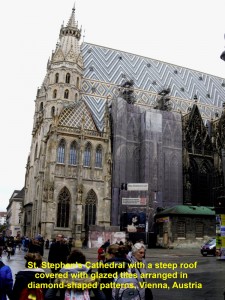
Some exterior parts of St. Stephen’s Cathedral turning black due to air pollution and acid rain in Vienna, Austria
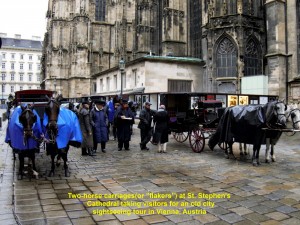
Two-horse carriages(“flakers”) waiting in St. Stephen’s Cathedral Square for visitors who want to tour the old city of Vienna, Austria
Dinner at S’ Mullerbeisl Restaurant
At 6 in the evening, we left St. Stephen’s Cathedral Square and walked for several minutes to S’ Mullerbeisl Restaurant where we had a simple Austrian meal for dinner. The photos below show the restaurant and fellow tour-members having Austrian dinner together at the restaurant.
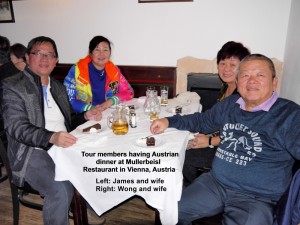
Tour-members, James Lee and wife(L), and Wong and wife(R), having dinner at Mullerbeisl Restaurant, Vienna
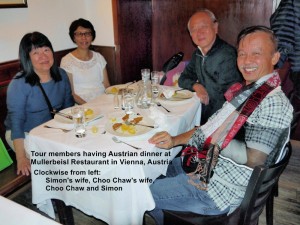
Tour-members, Simon Look and wife(front), and Choo Chaw and wife(back), having dinner at Mullerbeisl Restaurant, Vienna, Austria
Back to Hotel Exe Vienna
After dinner we went back to our hotel, Hotel Exe Vienna, and had a good rest.
The following morning we would leave Vienna, “The City of Music”and also “The City of Dreams”, and travel north to Brno and Prague in another country, Czech Republic.
Eastern Europe Travel(13-20 October 2015)

